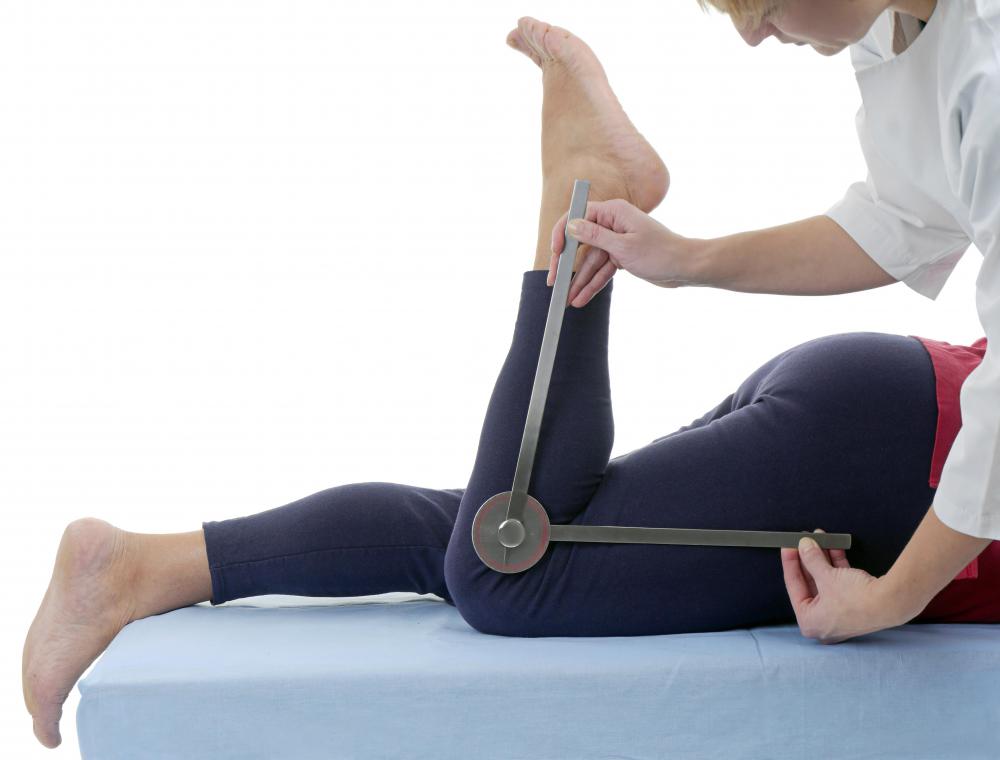At TheHealthBoard, we're committed to delivering accurate, trustworthy information. Our expert-authored content is rigorously fact-checked and sourced from credible authorities. Discover how we uphold the highest standards in providing you with reliable knowledge.
What are the Different Knee Ligaments?
There is a series of different knee ligaments that surround the knee joint. The anterior and posterior cruciate and the transverse ligaments are intracapsular. The extracapsular ligaments include the patellar, medial collateral, and oblique and arcuate popliteal. These knee ligaments help stabilize and strengthen the largest joint in the body by limiting its range of motion.
The medial and lateral collateral are the two major extracapsular knee ligaments. The medial collateral is on the inner side of the knee, and the lateral collateral is on the joint’s outer side. These collateral ligaments provide sideways stability to the knee joint.

Two knee ligaments cross in the center of the joint. These are the anterior and posterior cruciate ligaments. The anterior crosses in front of the posterior cruciate to form an x shape in the center of the knee. Together these two intracapsular ligaments prevent the tibia from moving too far forward or backward.
A tear or injury to the anterior cruciate ligament can result in joint instability. Without a strong anterior cruciate ligament, the tibia will move too far forward. A knee with a torn anterior cruciate may give out when changing direction quickly or pivoting. An anterior cruciate injury is much more common than a posterior cruciate tear, though the symptoms are very similar.

The patellar ligament is more commonly called the patellar tendon because it connects the tibia to the patella or kneecap. This is a strong knee ligament that allows for extension at the knee joint. This ligament helps the muscles extend the lower leg when participating in activities like jumping, pushing bike pedals, or kicking a ball.
Another of the major knee ligaments is the transverse meniscomeniscal ligament. This ligament is a band that passes horizontally in front of the knee joint. It connects the lateral and media menisci.

In addition to the major knee ligaments. there are several smaller ones. The oblique and arcuate popliteal ligaments are on the dorsal side of the joint. The oblique popliteal is broad and flat and is attached to the femur and the tibia. The arcuate popliteal is shaped like the letter y and is attached to the fibula with branches extending to the femur and tibia.

Many physical fitness activities and sports can place great strain on the knee joints because the movements often require twisting, pivoting, or jumping. Such forces can result in ligament injury, especially tears. A torn ligament typically causes swelling and pain when walking as well as an unstable feeling in the knee. A minor tear can self resolve with time, but major injuries often require surgery and prolonged recovery.
AS FEATURED ON:
AS FEATURED ON:


















Discuss this Article
Post your comments